
Key Points
- NYSE A/D Line Makes a Lower Low
- NYSE New Lows Take a Turn for the Worse
- NYSE New Highs Remain Elusive
- S&P 500 Breadth Stood Out on the Downside
- Small Cap Breadth Improved the Most on the Week
NYSE Breadth
The Advance/Decline line for the NYSE remains below the declining 50-day moving average and made a slightly lower low this week. Once again, the S&P 500 did not make a lower low and continues to trade above support while holding below its moving average. Holding support is key for the index, but the longer the A/D Line remains under pressure, the higher the odds that support will break.
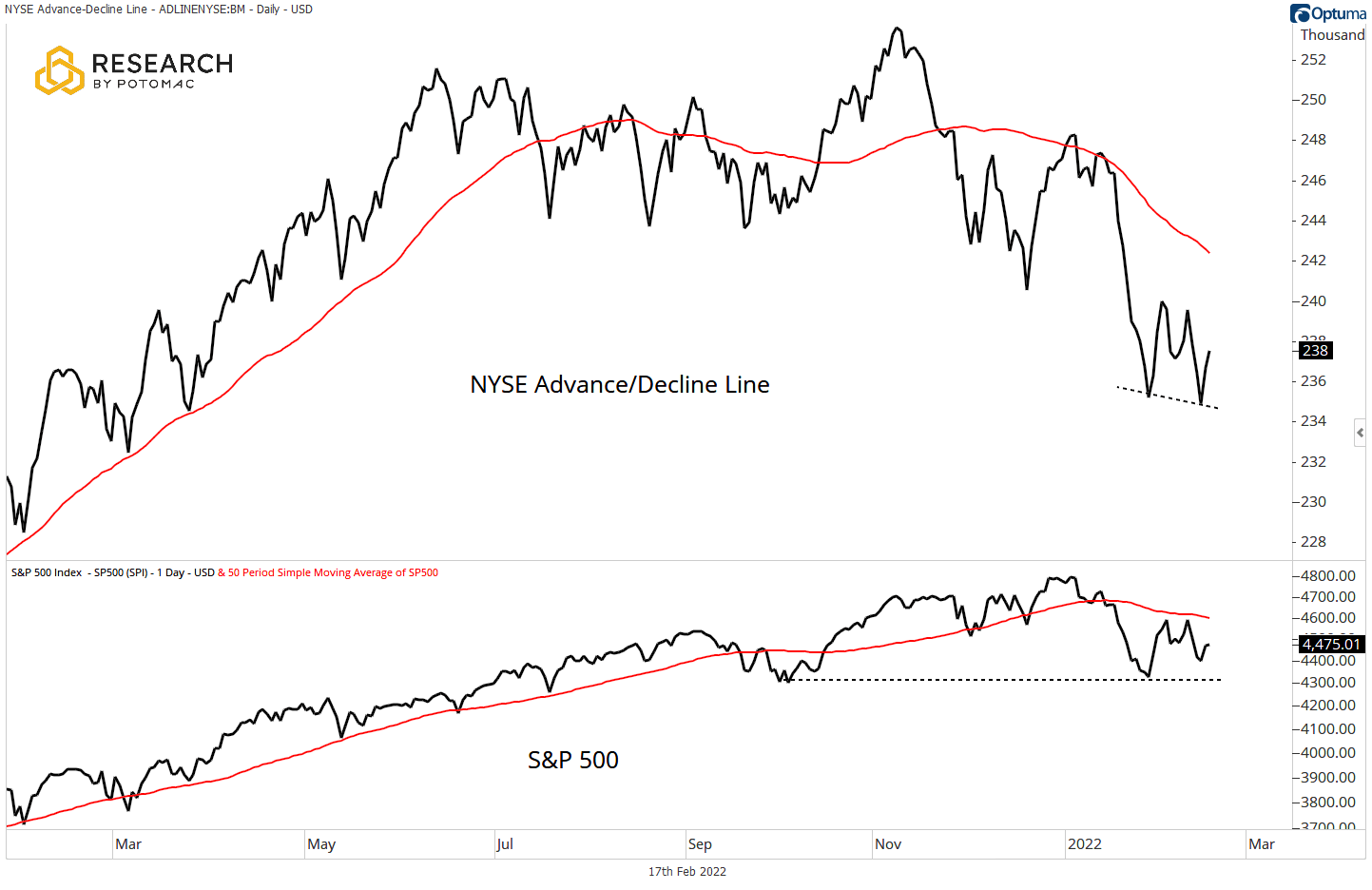
The five-day moving averages of issues on the NYSE making new 52-week and six-month lows took a turn to the upside over the past week. Thus far, the spike has not eclipsed the January peak, an important development for equity bulls as the index holds above support. A continued build in lows would increase the odds that the S&P 500 breaks support.
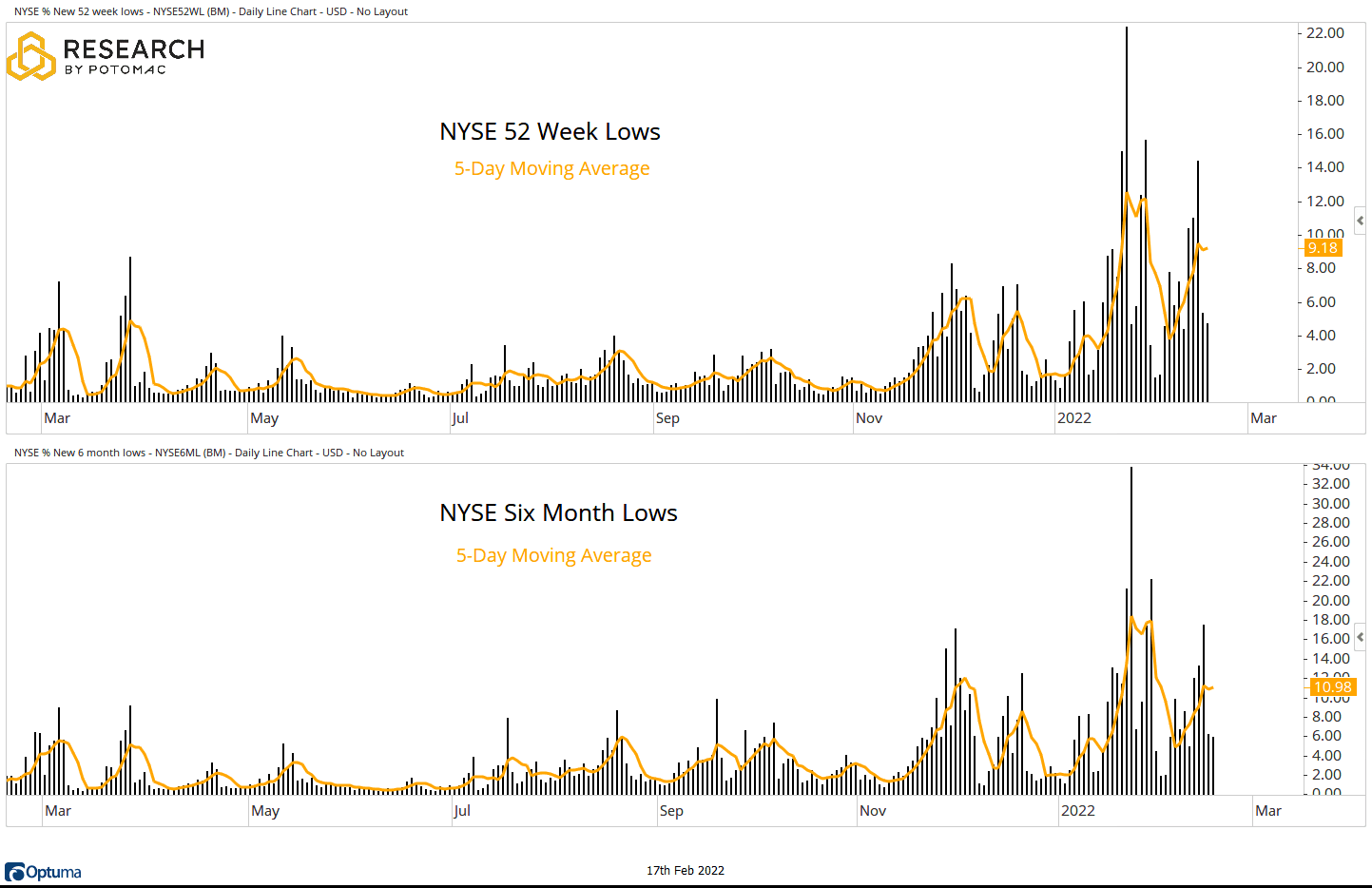
While new lows have taken a turn for the worse, new highs continue to trend lower. The five-day moving averages of stocks on the NYSE making new six-month and 52-week highs are moving to the downside after peaking at a lower high.
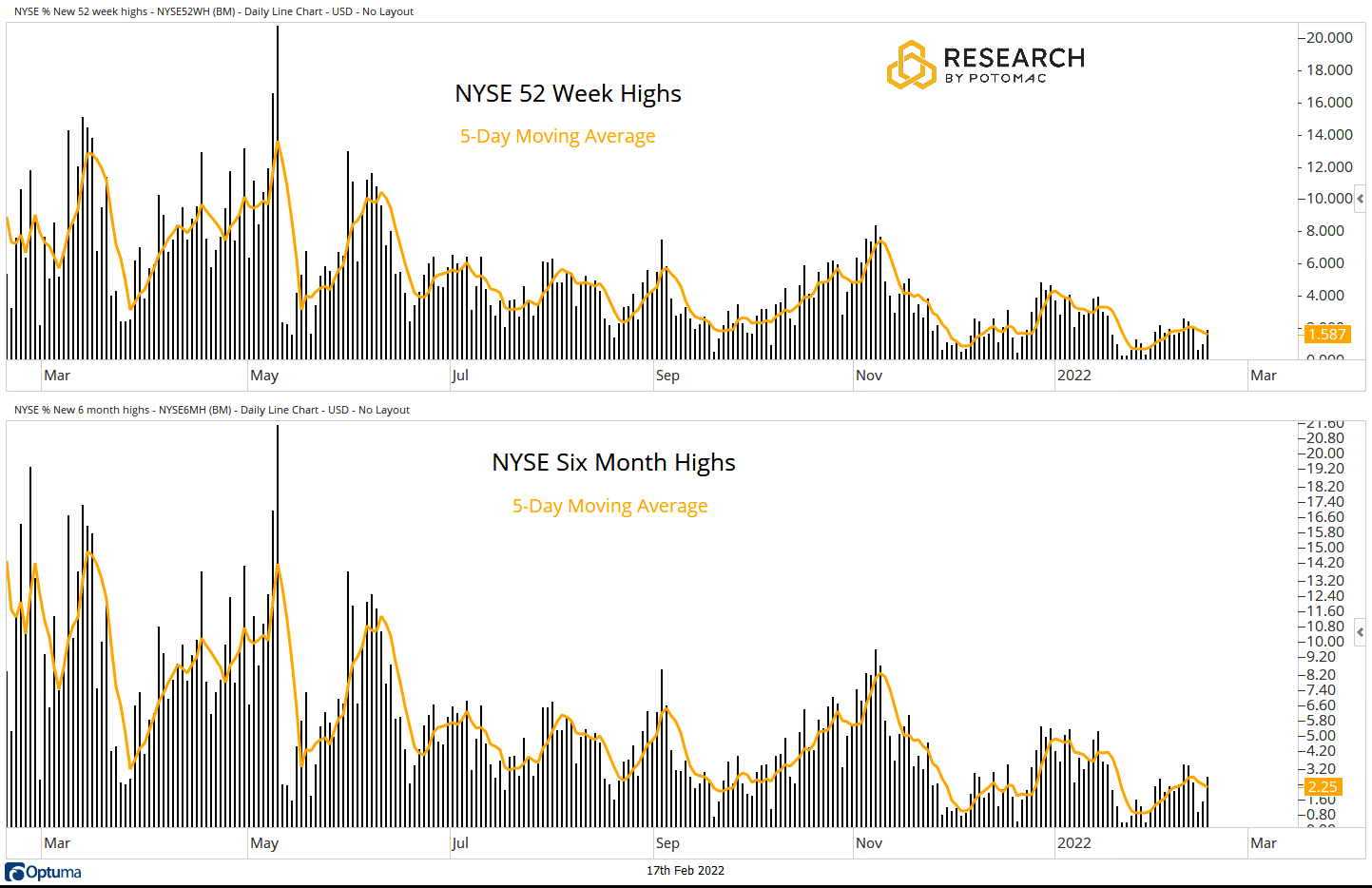
With the S&P 500 once again dancing with its 200-day moving average, the percentage of NYSE issues trading above their respective 200-day moving averages remains in a downtrend. This week’s reading of 29% is flat with last week, but equity bulls want to see improvement to have confidence that rallies from current levels will have staying power.
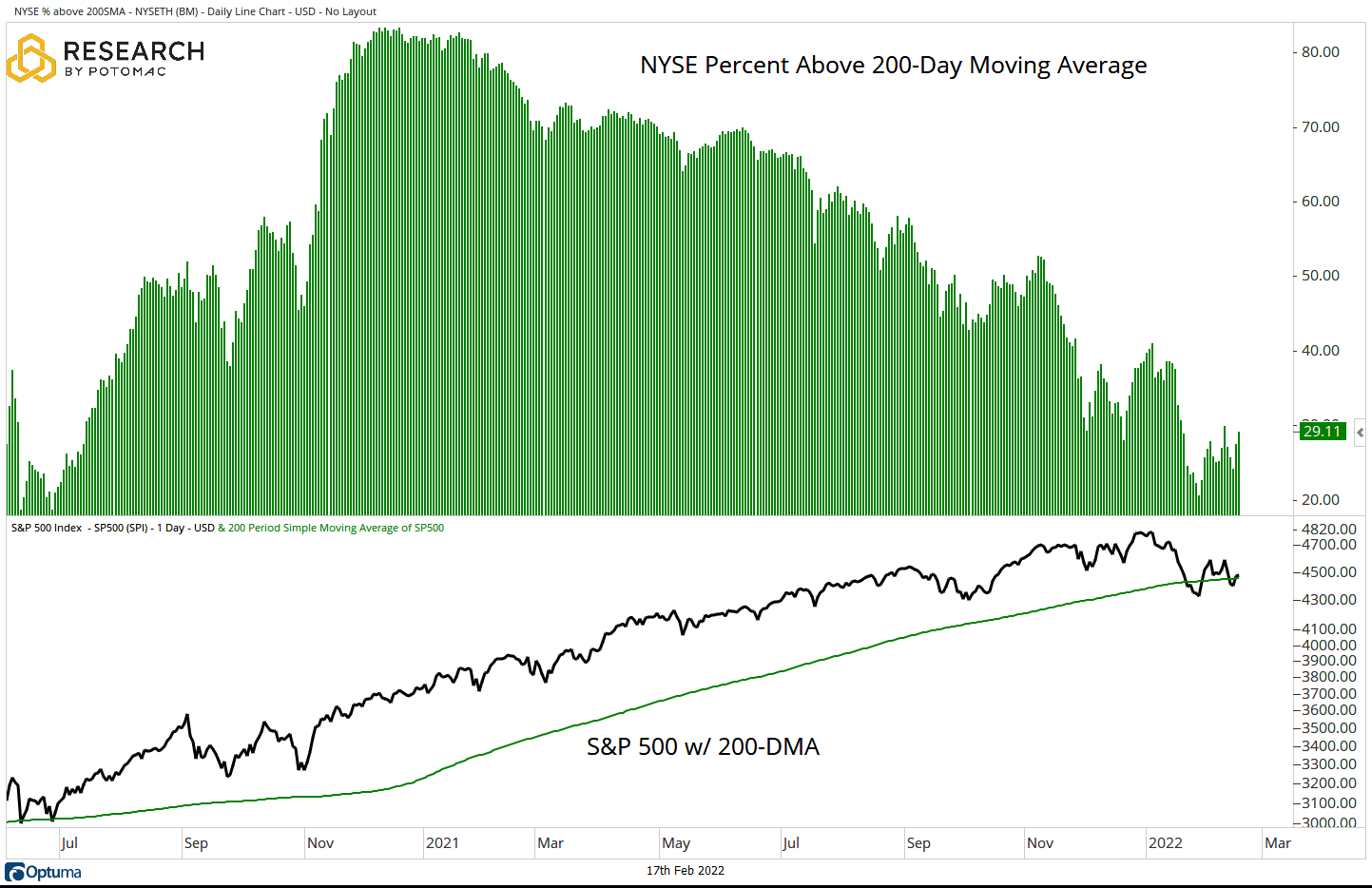
The percentage of NYSE issues trading above their respective 50-day moving averages clocks in at 33% this week, down slightly from last week’s reading of 34%. Here too, the trend is one of lower peaks. This dynamic plays out as the S&P 500 remains stuck below its declining 50-day moving average.
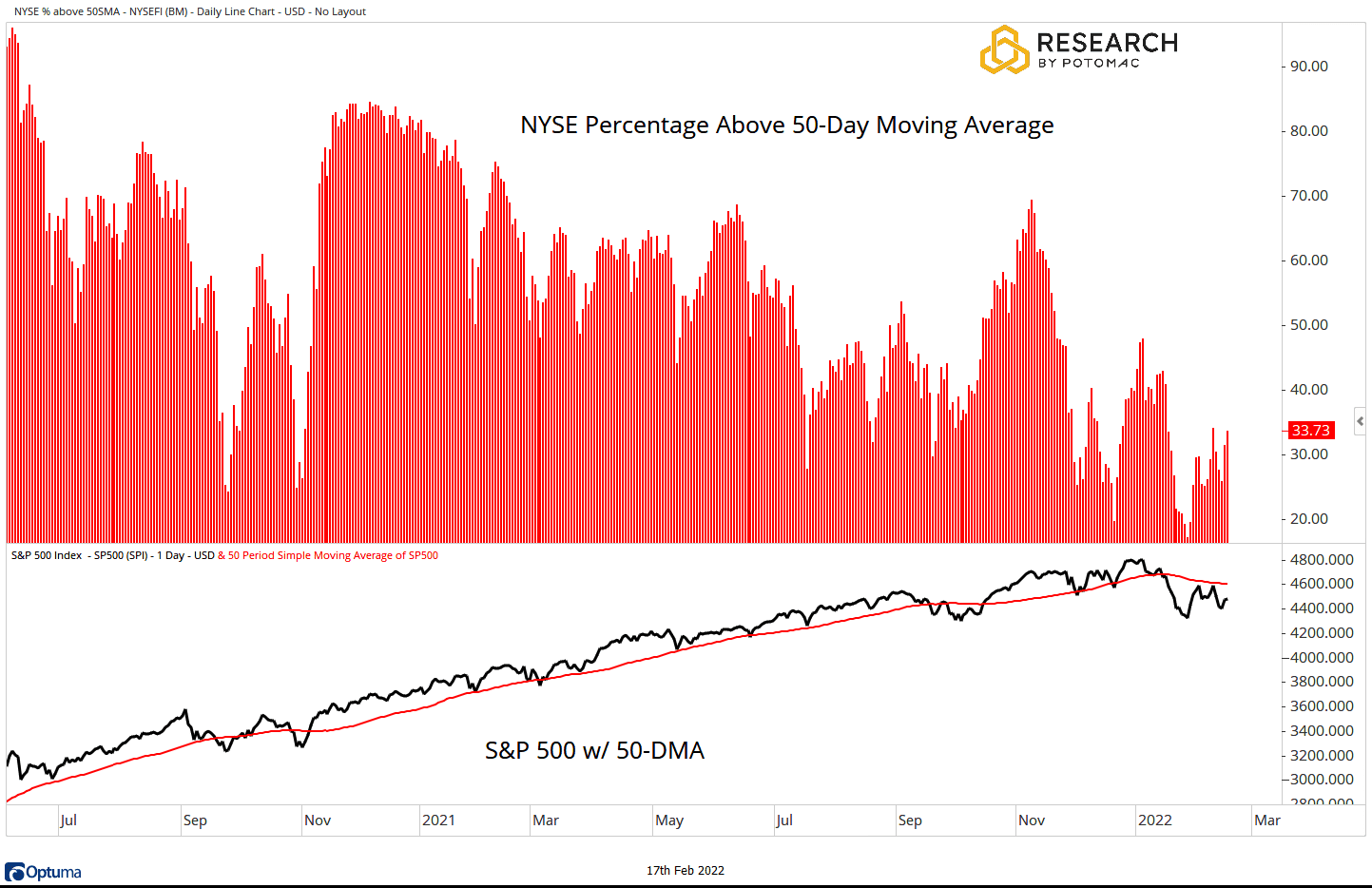
The percentage of NYSE issues trading above their respective 20-day moving averages remains the one bright spot in the NYSE data. This metric is holding on to the spike that he highlighted last week and even managed to close above the 50% level. At the same time, the S&P 500 is fighting to regain its 20-day moving average. If breadth is going to improve, it must start with the short-term metrics. We went through this concept in our weekly breadth note last week.
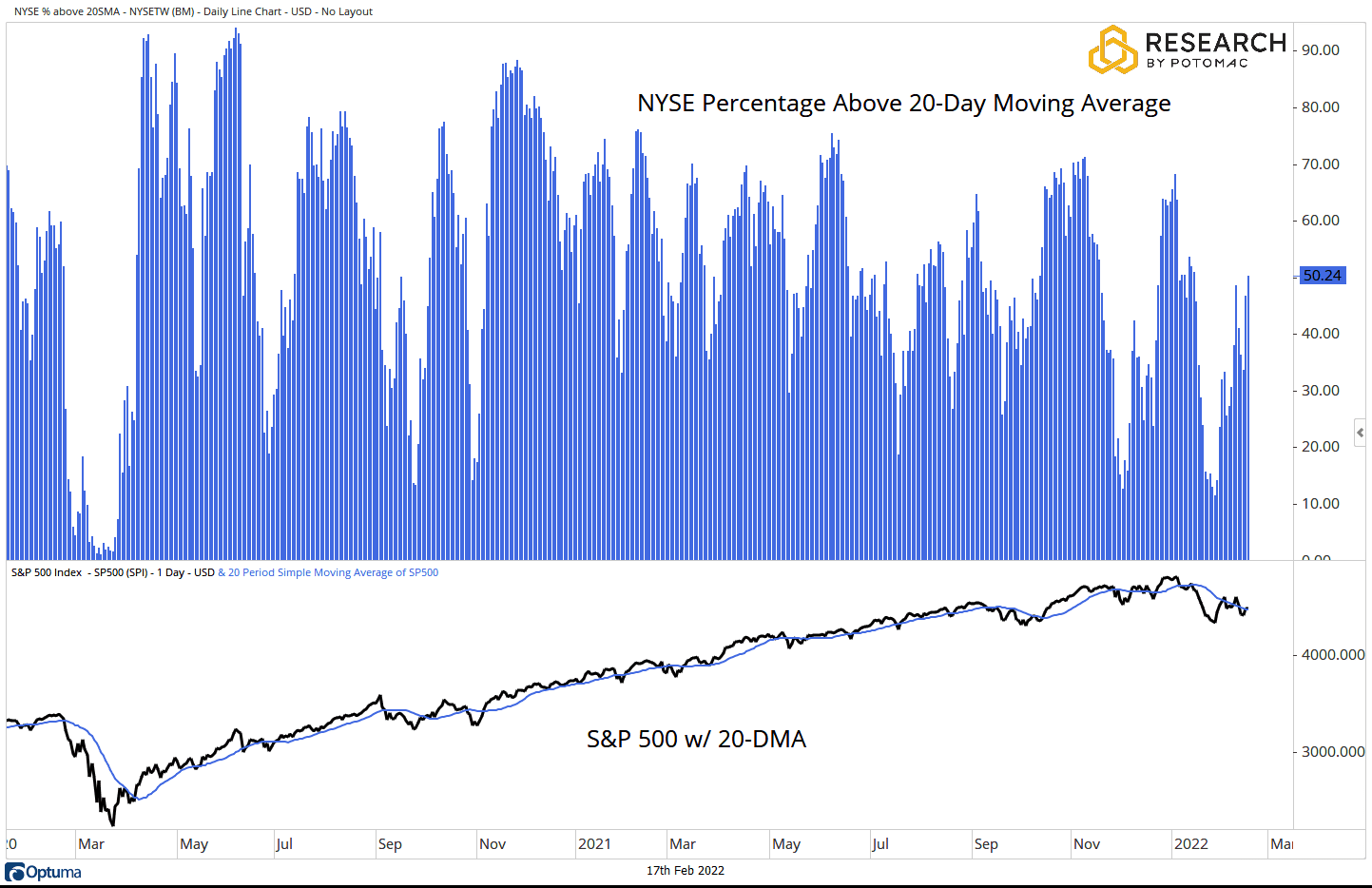
S&P 500 Breadth
Breadth metrics for the S&P 500 have degraded over the past week.
- Advance/Decline Line: Moves back below the 50-day moving average.
- Percent Above Their 200-Day Moving Average: 48% from 58% last week.
- Percent Above Their 50-Day Moving Average: 41% from 50% last week.
- Percent Above Their 20-Day Moving Average: 54% from 70% last week.
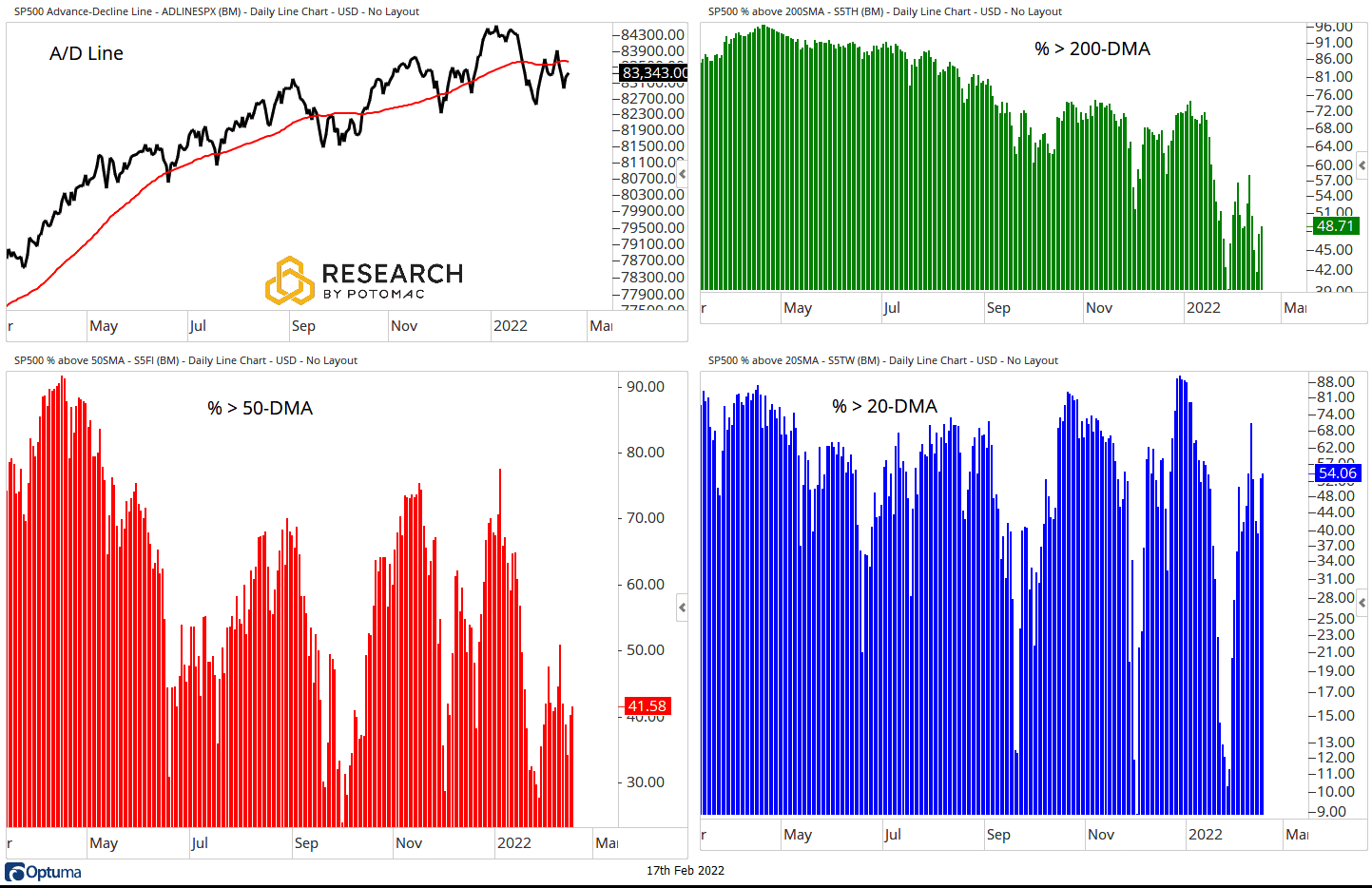
Small Cap Breadth
Breadth metrics for the S&P 600 Small Cap Index improved on the week.
- Advance/Decline Line: Below the 50-day moving average, building a base.
- Percent Above Their 200-Day Moving Average: 43% from 40% last week.
- Percent Above Their 50-Day Moving Average: 46% from 37% last week.
- Percent Above Their 20-Day Moving Average: 73% from 54% last week.
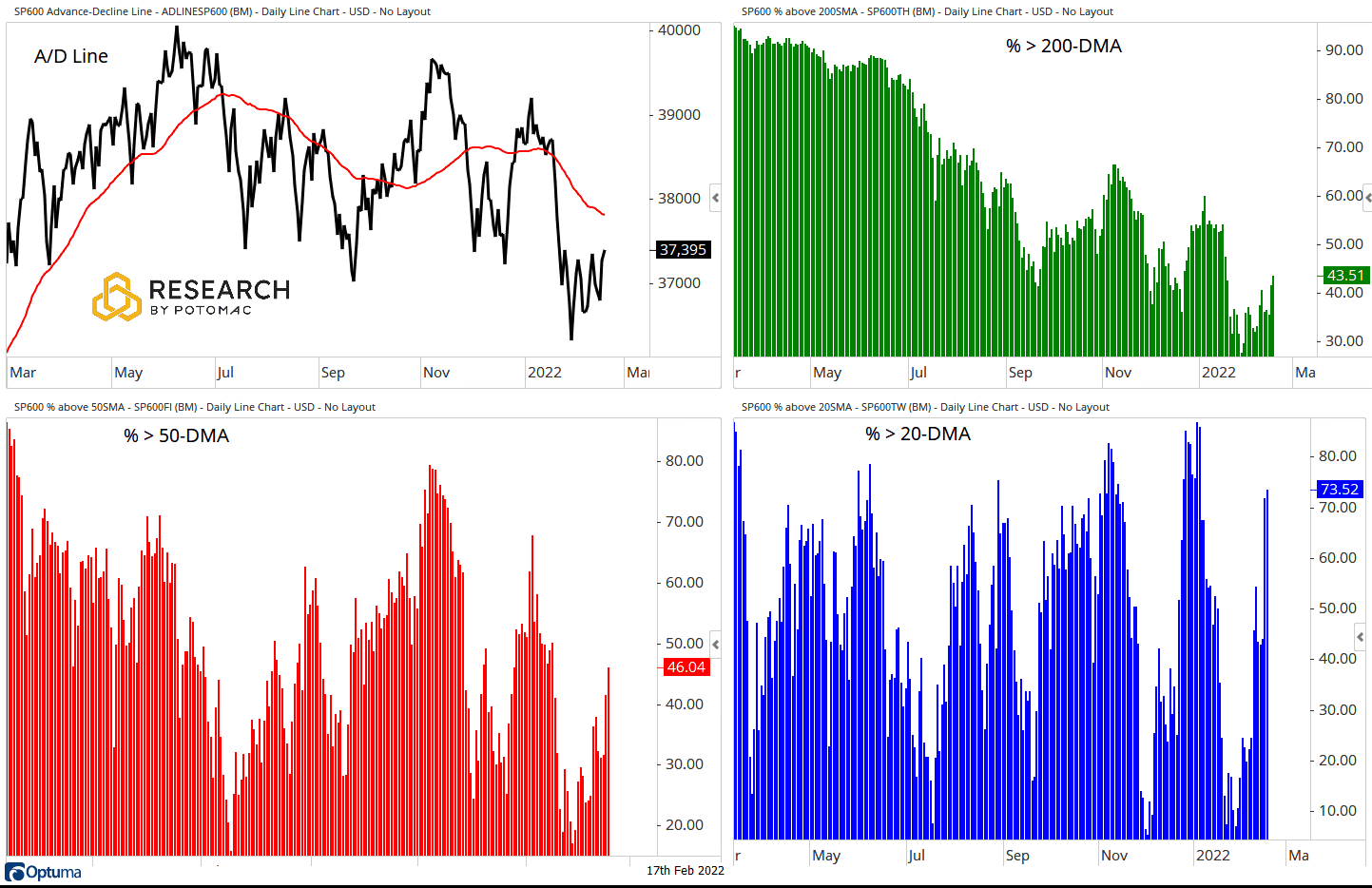
In a note yesterday, we pointed out that we were beginning to see subtle signs of life in the Small Cap universe.
Take-Aways:
Broadly speaking, the breadth picture remains less than impressive across the major U.S. markets. NYSE data is showing signs of improvement in the short term, but that has not translated to the intermediate and long-term trends yet. S&P 500 data degraded over the past week. Small Caps bucked the trend and improved on the week.
Disclosure: This information is prepared for general information only and should not be considered as individual investment advice nor as a solicitation to buy or offer to sell any securities. This material does not constitute any representation as to the suitability or appropriateness of any investment advisory program or security. Please visit our FULL DISCLOSURE page.
